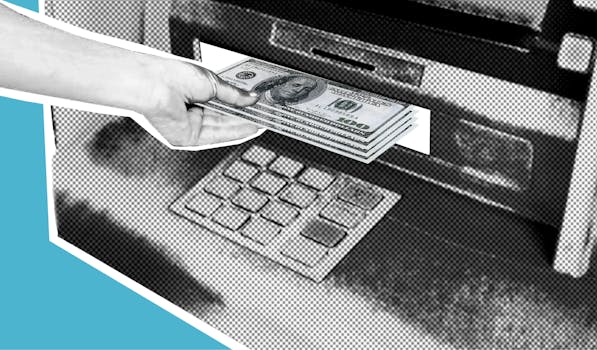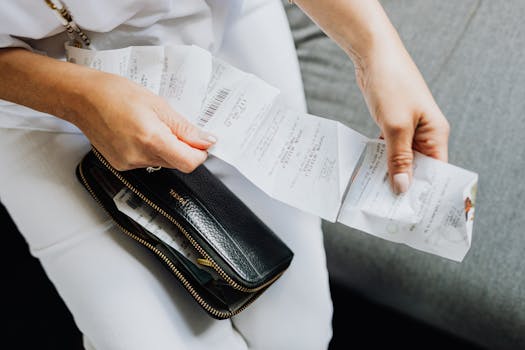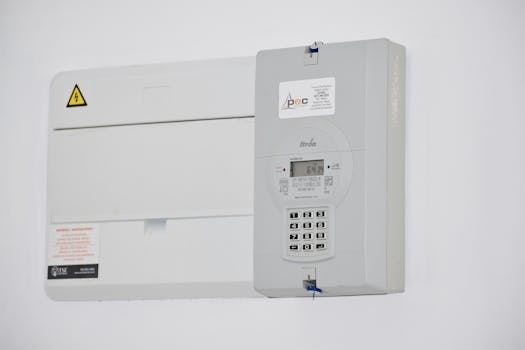Saving Strategies
High-Yield Savings Accounts Explained: Earn More and Grow Faster
Learn the actionable steps to maximize your growth with high-yield savings accounts. Compare rates, minimize fees, and get real-world tips for higher returns and smarter saving.
Advertisement
Many people want their money to work a bit harder, but the typical savings account barely nudges your balance upward. That’s where high-yield savings accounts quietly change the game—boosting your returns without extra risk or schedule changes.
Savings goals, like building an emergency fund or planning a big trip, feel more achievable with a little extra interest. Steadily earning more on what you’ve already saved is a sensible way to get ahead without changing your habits.
This article shows practical ways high-yield savings accounts can increase your financial security and help your savings grow faster. Discover rules, checklists, and side-by-side comparisons to choose and use these accounts to your best advantage.
Comparing High-Yield Savings to Regular Accounts: See the Real Gains
Switching to high-yield savings accounts strengthens your monthly interest earnings right away, giving your balance a real chance to outpace inflation. Here’s what you’ll notice when you make that change.
If you deposit $5,000 into a traditional savings account, you might earn under $10 in interest a year. Transferring that money to a high-yield savings account could grow that same sum by $50 or more annually, just from better rates.
Defining High-Yield: What Counts, and Why It Matters
Financial institutions may call any account that pays well above the national savings rate “high-yield.” As of 2024, that often means interest rates of 4% APY or more, compared to 0.40% or less elsewhere.
Many online banks offer these high rates due to lower overhead. Brick-and-mortar banks, facing more operating costs, rarely match them. Spotting the right deals takes checking rates regularly—small changes add up surprisingly fast.
Maximizing gains begins by identifying accounts labeled as “high-yield” with rates clearly listed upfront. Always check the APY and factor in bonus offers, but avoid confusing short-term promos with steady, ongoing benefits.
Case Study: Two Neighbors, Two Savings Paths
Imagine Maria and Sam, coworkers both saving for next year’s expenses. Maria uses a basic local bank account that earns 0.35% APY; Sam transfers her money into a 4.15% high-yield savings account online.
After a year with $10,000 saved, Maria’s balance grows by about $35 through interest, while Sam’s grows by $415. Neither changes their spending or deposits—Sam just switched her savings account.
Maria, after hearing Sam’s results, decides to move her savings as well. She says, “Why let my money sit idle?” That same decision can unlock hundreds of extra dollars each year for you, too.
| Account Type | Interest Rate (APY) | Yearly Interest on $10,000 | What to Do Next |
|---|---|---|---|
| Regular Savings | 0.35% | $35.00 | Compare rates at local and online banks |
| Credit Union Savings | 0.55% | $55.00 | Ask about credit union eligibility |
| High-Yield Savings (Online) | 4.15% | $415.00 | Open an account online within minutes |
| Introductory Promo Rate | 5.00% (for 6 months) | $250.00 (6 months) | Set a reminder to check after promo ends |
| Money Market Account | 3.75% | $375.00 | Check transaction limits and fees |
Eliminating Fees and Boosting Returns: Every Dollar Counts
Switching to high-yield savings accounts not only grows your interest faster but also helps you avoid unnecessary fees that slow you down. Many accounts now keep things fee-free to help savers get ahead.
Paying $5 a month just to keep your savings open quickly eats any tiny bit of interest you earn. High-yield accounts, particularly from online banks, usually skip these charges entirely, making every deposited dollar count.
Identifying Sneaky Fees That Cut Into Gains
Look beyond listed APY—find out if the account charges for monthly maintenance, excessive transactions, or low balances. Steer clear of anything with recurring or unexpected deductions, as they erode your yield without warning.
Some high-yield options might have withdrawal restrictions tied to federal law, but rarely penalize day-to-day deposits or keep minimums high. The best choice is transparent, with clear disclosures and no surprise fees in the monthly statement.
- Review account fee schedules before signing up: You’ll spot any possible charges, ensuring your interest growth remains uninterrupted and your savings target stays realistic.
- Confirm online transfer limits and processing times: Fast, low-fee or free transfers help move your money as needed, encouraging flexible saving without penalty.
- Monitor your balance and transaction logs weekly: Frequent monitoring allows you to catch errors or overdue charges so they can be disputed right away.
- Choose accounts with fee forgiveness for minor missteps: Some banks waive a missed minimum balance charge once a year, letting mistakes slide without derailing your strategy.
- Ask about ATM access rules: Some high-yield options don’t provide ATM cards, so check if you’ll need one regularly and factor that into your selection.
Zero-fee accounts aren’t rare with high-yield savings accounts, but checking the fine print is always wise. Making a checklist for must-have features reduces risk and supports consistent growth.
Saving More by Keeping It Simple
Choosing streamlined accounts without complex requirements lowers your risk of missed details. Many high-yield savings accounts only need a single monthly deposit to maintain high rates and fee-free status.
For example, Marcus, a graduate student, chooses an online high-yield account that requires just a $10 minimum balance and no fees. He sets up automated monthly transfers, makes no withdrawals, and lets interest accumulate.
- Set up recurring deposits: You’ll keep your high-yield account active, avoid balance-based fees, and grow your savings on autopilot—no stress, no manual effort.
- Opt for eStatements: Digital statements are secure, cut down on mail clutter, and sometimes qualify your account for bonus rates or extra features.
- Link external checking accounts only as needed: Limit exposure to fraud and keep transfers simple, minimizing the hassle of managing multiple logins and keeping your focus on growth.
- Keep contact info updated: Receiving notifications ensures you’ll catch changes in terms or rates right away, so you’re never taken off guard by adjustments.
- Check app ratings and support channels: If your bank’s support is slow or buggy, moving your hard-earned savings is quicker when you already have another reliable spot picked out.
Automating your savings gives you more time to focus on your priorities elsewhere, while your high-yield savings account works quietly in the background—every dollar secure, every interest payment on schedule.
Everyday Scenarios Where High-Yield Makes the Difference
Simply switching your primary savings to a high-yield account sets you up for stronger gains, with your balance compounding quicker. Here are some daily-life moments made easier and more rewarding by this swap.
An emergency fund, planned expense, or even just general saving benefits from faster interest accumulation. Think of the high-yield rate like switching to a faster lane: your money gets where it’s going with less waiting.
Emergency Fund Growth for Real-Life Needs
Brian, a teacher, keeps $8,000 untouched in a high-yield savings account. A surprise car breakdown forces a $1,200 repair, but his balance springs back quickly thanks to monthly interest earned, helping him stay prepared.
Over five years, his emergency fund not only absorbs life’s shocks but also earns enough interest to cover minor setbacks, keeping Brian calm and confident after every withdrawal.
The steady boost from high-yield savings accounts means Brian never needs to pause his daily spending habits, knowing his safety net continually refills in the background.
Short-Term Goal Setting Made More Rewarding
Susan earmarks $3,000 for a family vacation—she chooses a high-yield account to separate her travel savings. In twelve months, her balance jumps to $3,120 purely from interest and disciplined deposits.
Her kids check the growing balance online, fueling excitement and accountability. The visible extra earnings motivate her family to keep contributing, especially as their trip draws near and every dollar counts.
Splitting savings goals into separate high-yield accounts helps Susan stay organized and lets each plan benefit from higher interest, which she recommends to her friends wanting simpler, more effective budgeting.
Daily Habits to Boost Your Savings Power
Adopting practical habits with your high-yield savings account ensures your balance continues to grow with minimal fuss. Simple routines build lasting momentum—here’s how to make that happen.
Think of your high-yield account as a smart, low-maintenance garden. Nurture it regularly with tiny deposits, check on its growth once a week, and let the compound interest add up naturally.
Monthly Check-Ins for Security and Strategy
Setting a calendar reminder each month to log into your account helps spot unauthorized activity or new offers. These check-ins provide early notice if your APY changes or if the bank introduces new perks.
Writing down your current balance and interest earned each month, whether in a notebook or an app, keeps your progress tangible. Tracking in real time encourages you to stick with your plan and make adjustments promptly.
Automated alerts—like low-balance warnings or deposit confirmations—add another layer of confidence. You’ll resolve issues fast and give yourself steady encouragement as your savings climb higher each quarter.
Adding Micro-Deposits for Accelerated Growth
Spare change, bonuses, and side income quickly add up in a high-yield savings account. For instance, rounding up every debit card transaction and sending the difference automatically creates $20-$40 in extra savings monthly.
Redirecting small windfalls—such as birthday cash or rebates—boosts your balance with no extra effort. The effect compounds, since every new deposit generates more interest over time.
Trying a monthly “no-spend week” lets you funnel whatever you’d otherwise spend into your high-yield account. The new routine feels motivating and lets you see measurable results each time you check your statements.
Reader Checklist: Opening and Managing Your High-Yield Savings
Opening and optimizing a high-yield savings account is straightforward when using a concise checklist. Completing these action items ensures your savings are secure, accessible, and earning at their highest potential.
Double-check every box before making your first deposit. Even small steps protect your hard-earned savings from surprises and put you on a direct path to higher interest returns.
Step-by-Step for a Smooth Sign Up
Begin by researching banks or credit unions offering the highest APY with no recurring fees. Ratings from user reviews or trusted financial sites provide extra assurance about digital security and ease of access.
Once you’ve picked an account, gather your ID, Social Security number, and funding account details. Fill out the online application, confirm your email, and link your primary checking account for easy transfers.
Set up two-factor authentication for account login. This small safety step blocks most online hackers and protects your growing balance from theft or tampering, with minimal extra effort.
Keeping Your Information Up to Date
Check your account profile after sign up—correct anything from address typos to phone number changes. Keeping details current ensures you receive every critical notice and can recover your account easily if you forget a password.
Review beneficiary fields if you want a spouse or child to inherit the funds. Outdated designations can delay or complicate transfers, so verify your wishes stay accurate as your family changes.
Revisit your settings yearly with the same care as filing taxes or renewing a driver’s license. Staying proactive is smarter and saves effort later.
Fine-Tuning: When to Adjust Your High-Yield Savings Strategy
Monitoring rate changes and evaluating account performance lets you capture better offers as they arise. Savvy savers re-evaluate their high-yield savings accounts every quarter or right after any major financial change.
If your existing bank drops its APY or introduces a maintenance fee, it’s time to shop around again. Staying alert ensures you always maximize your returns—even if bank trends shift without warning.
Rebalancing to Match Big Life Events
Major changes—job moves, large purchases, or family additions—call for a fresh look at your savings vehicle. For example, increasing your emergency fund target after a new baby or home purchase means you may want more robust account features.
Transferring funds to a better-paying high-yield option doesn’t impact your credit score and usually takes less than an hour online. Most banks make it simple, so you can adapt quickly.
You can keep old accounts open with a low balance just in case, while funneling new savings where they’ll earn most. That flexibility ensures your strategy never gets outdated or stuck in a rut.
Taking Advantage of Limited-Time APY Promotions
Occasionally, banks advertise high teaser rates for a few months or for deposits above a certain threshold. Read the terms closely—see how long the promotional APY lasts and what happens afterward.
Using teaser rates works best when you set calendar reminders to revisit your account before the promo ends. Make a script to call or email the bank and confirm your next step before changes kick in.
If you spot a drop in your interest earnings, move your funds to a new high-yield savings account with a consistently high APY. A little legwork once a year keeps your money growing fast.
Real-World Results: What to Expect From Smarter Saving
Each step you take to compare, open, and manage a high-yield savings account adds up. Over months and years, the difference between 0.40% and 4% is vast—hundreds or even thousands of dollars extra, with no extra effort.
Consistency, careful monitoring, and willingness to adjust accounts as needed can match or exceed the gains many people expect from investments carrying much higher risk.
Building the habit of reviewing your APY, updating your checklist, and automating your deposits is practical and effective. Soon, you’ll notice your savings target’s arrival date moving closer, month by month.
Frequently Asked Questions
- What makes high-yield savings accounts earn so much more than regular savings accounts?
High-yield savings accounts, particularly those offered by online banks, have much lower overhead costs. They pass those savings onto customers through significantly higher annual percentage yields (APY), letting your savings grow more quickly without additional deposits or effort. - Can I lose money in a high-yield savings account?
If your high-yield savings account is with an FDIC- or NCUA-insured institution, your deposits are protected up to $250,000. Your principal is safe, so the main risk is opportunity cost—if rates change, you can move to a new provider without penalty. - How often does the interest rate change?
Interest rates on high-yield savings accounts can change at any time, often on a monthly basis. Most banks email members when APYs adjust, but monitoring every couple of months yourself keeps you alert to new opportunities or drops. - Are withdrawals or transfers limited?
Federal law no longer caps the number of monthly withdrawals from savings accounts, but some banks may still limit transfers or charge fees for excessive activity. Always check your account’s terms for specifics to avoid unnecessary charges. - Does opening a high-yield savings account hurt my credit?
No, opening a standard high-yield savings account has no effect on your credit score. Banks run identity checks using soft inquiries, not hard pulls, ensuring your credit stays the same regardless of how many accounts you shop for or open.





